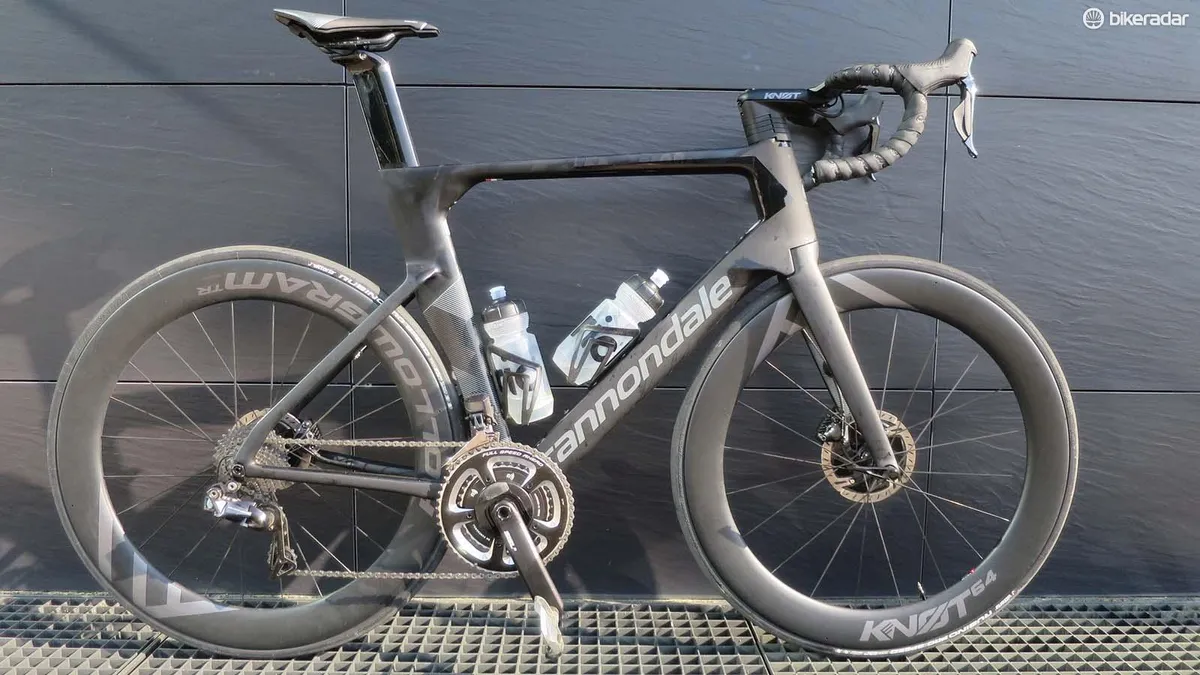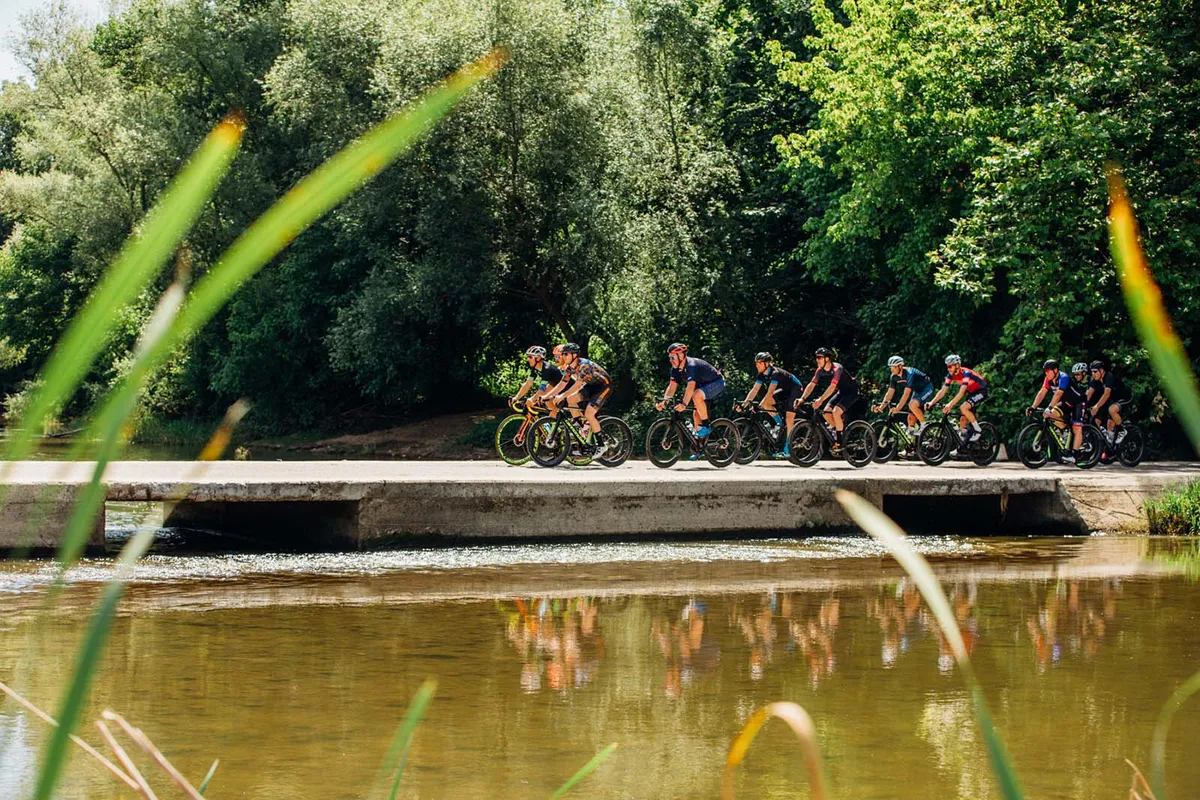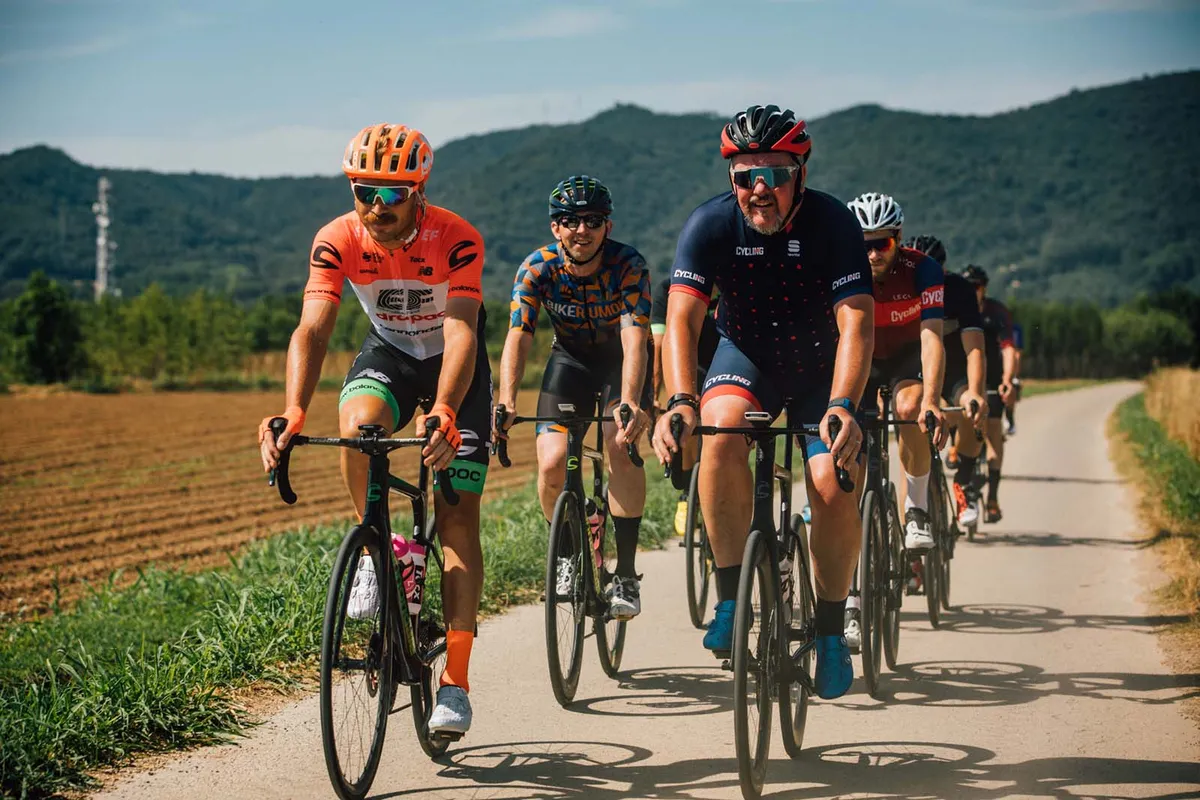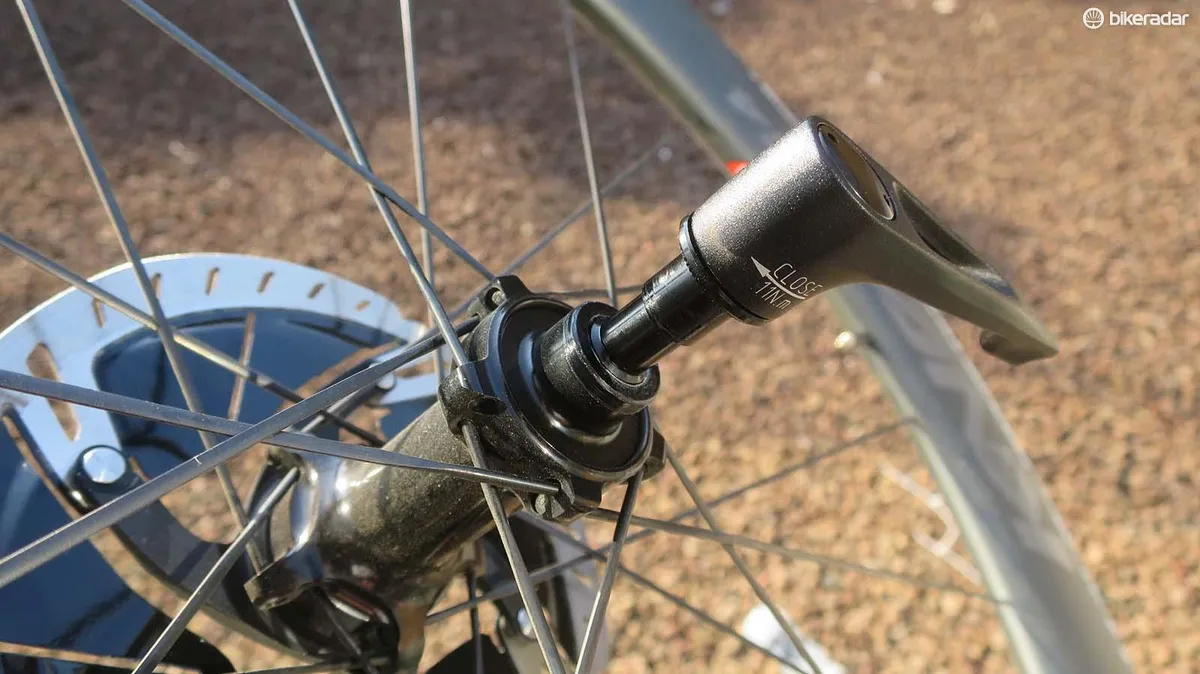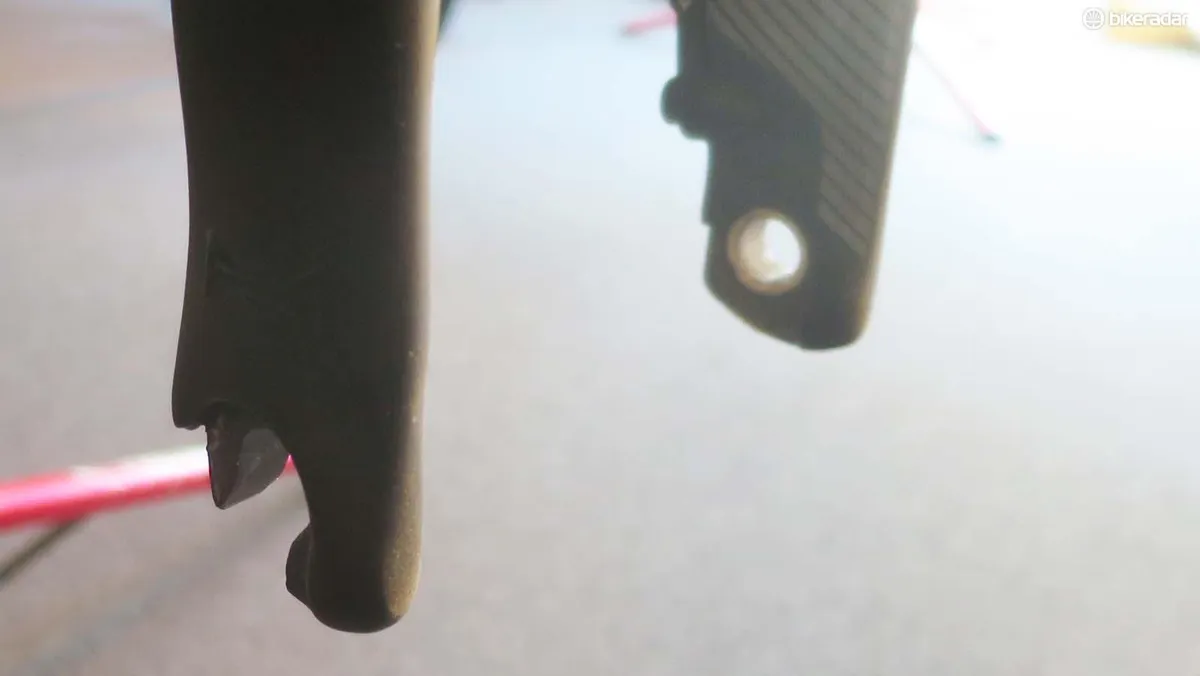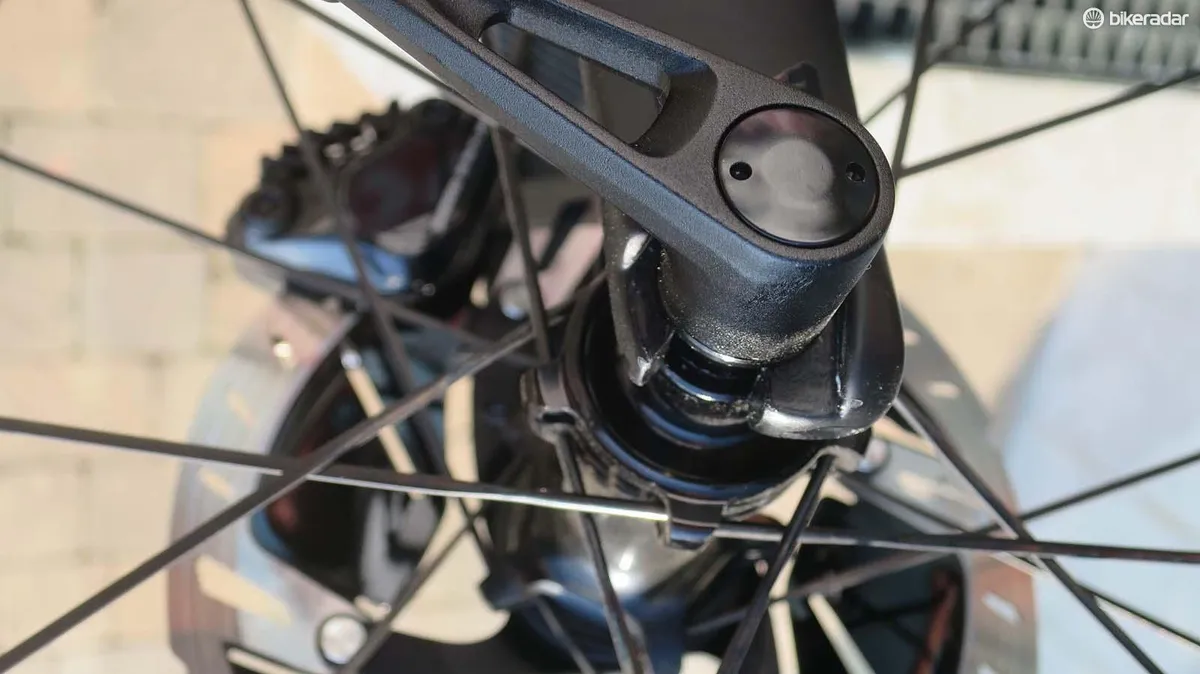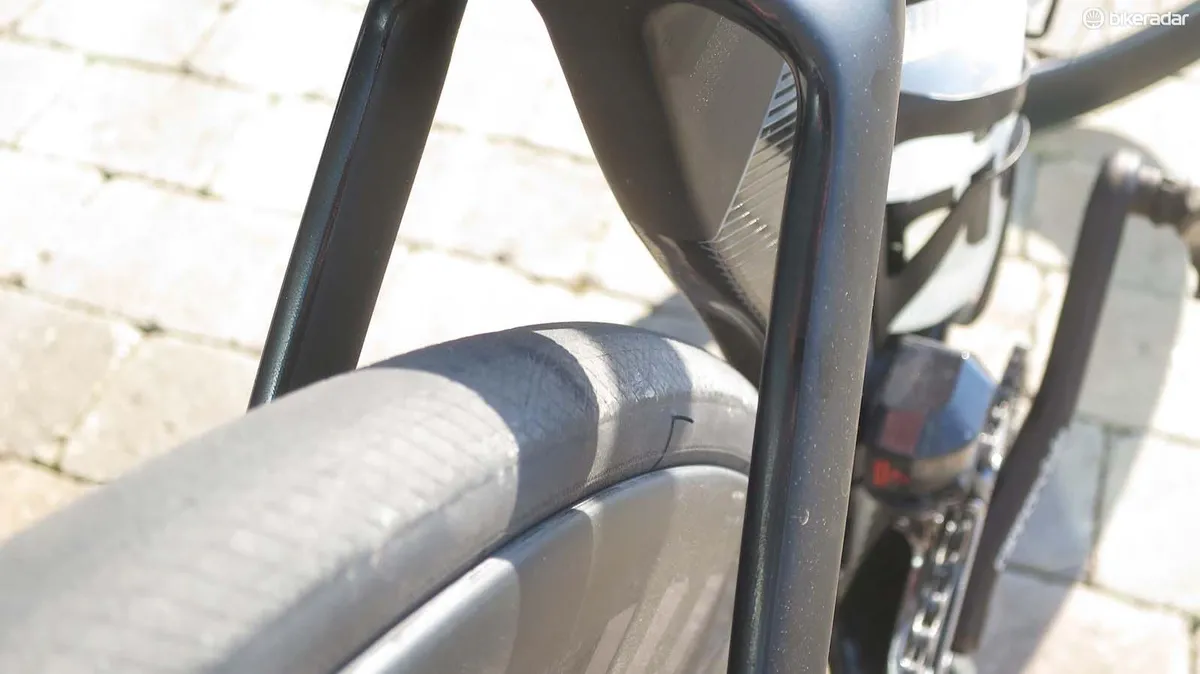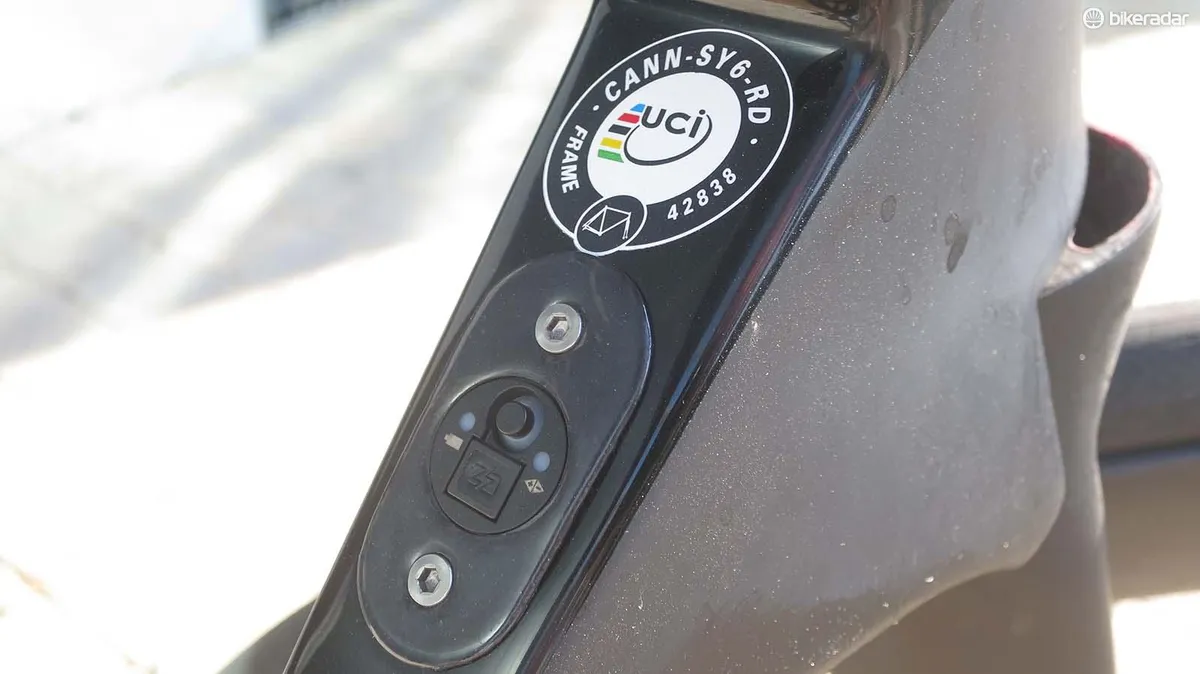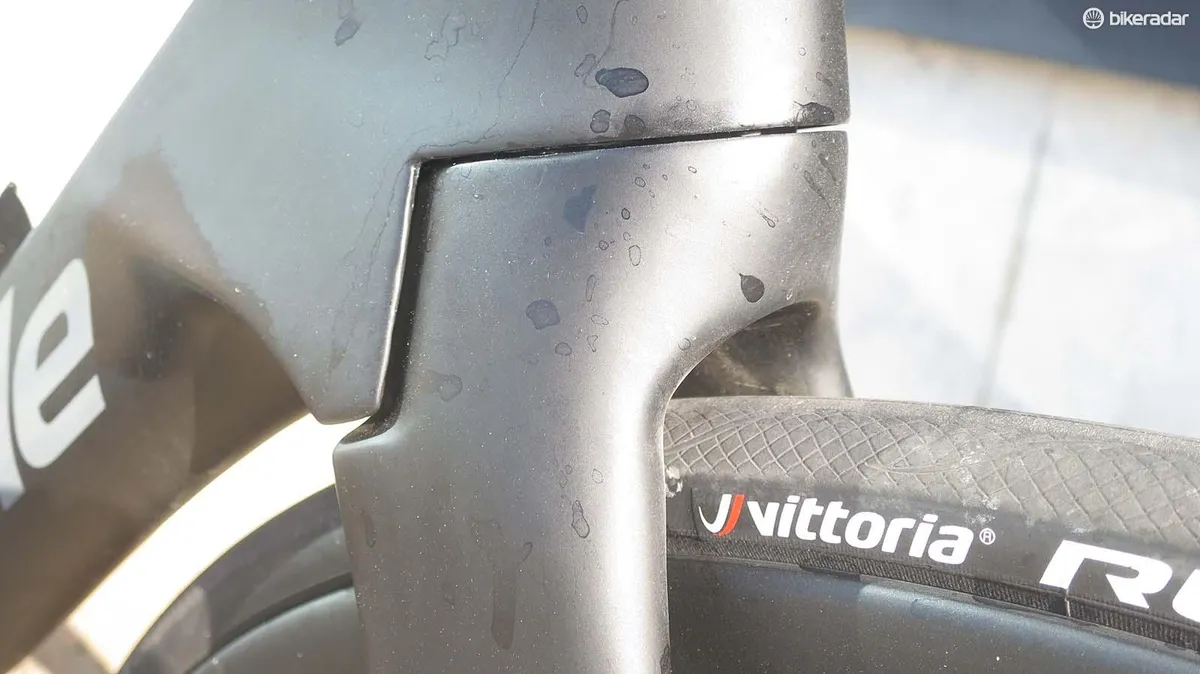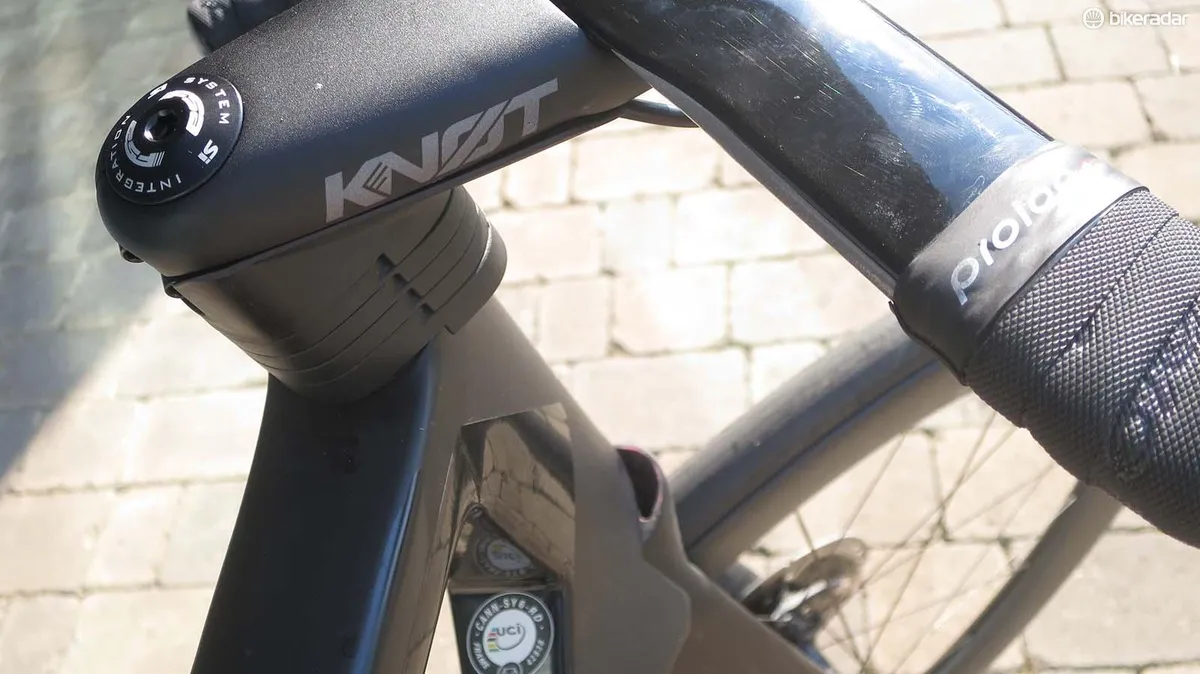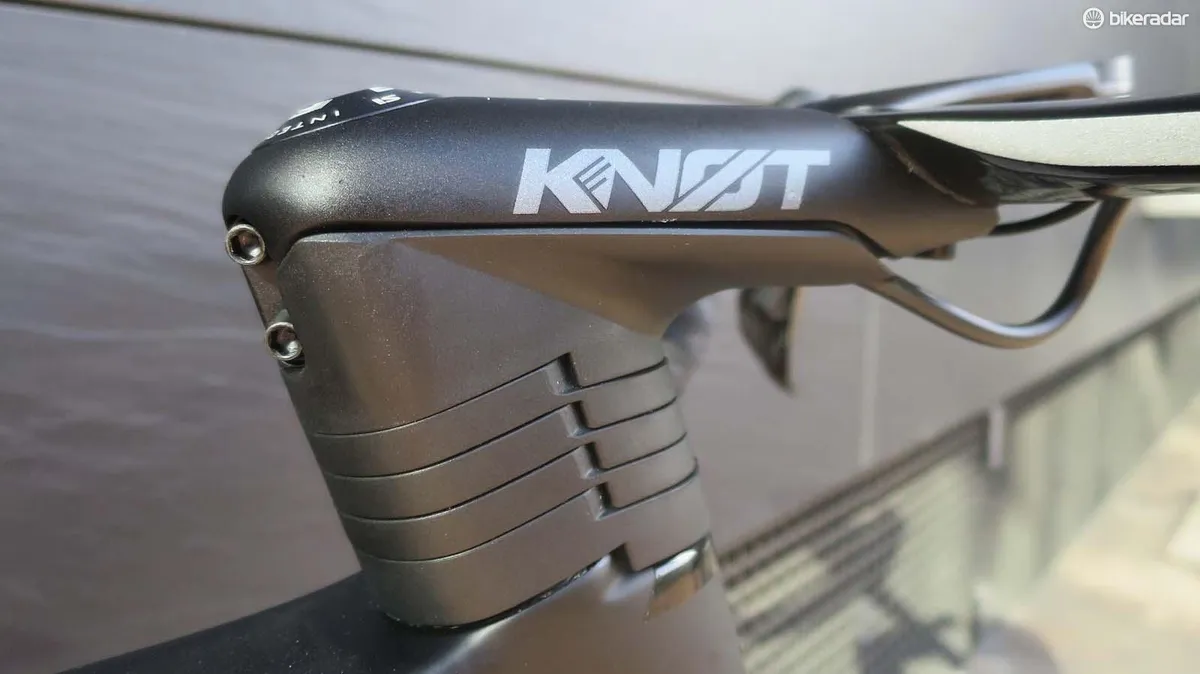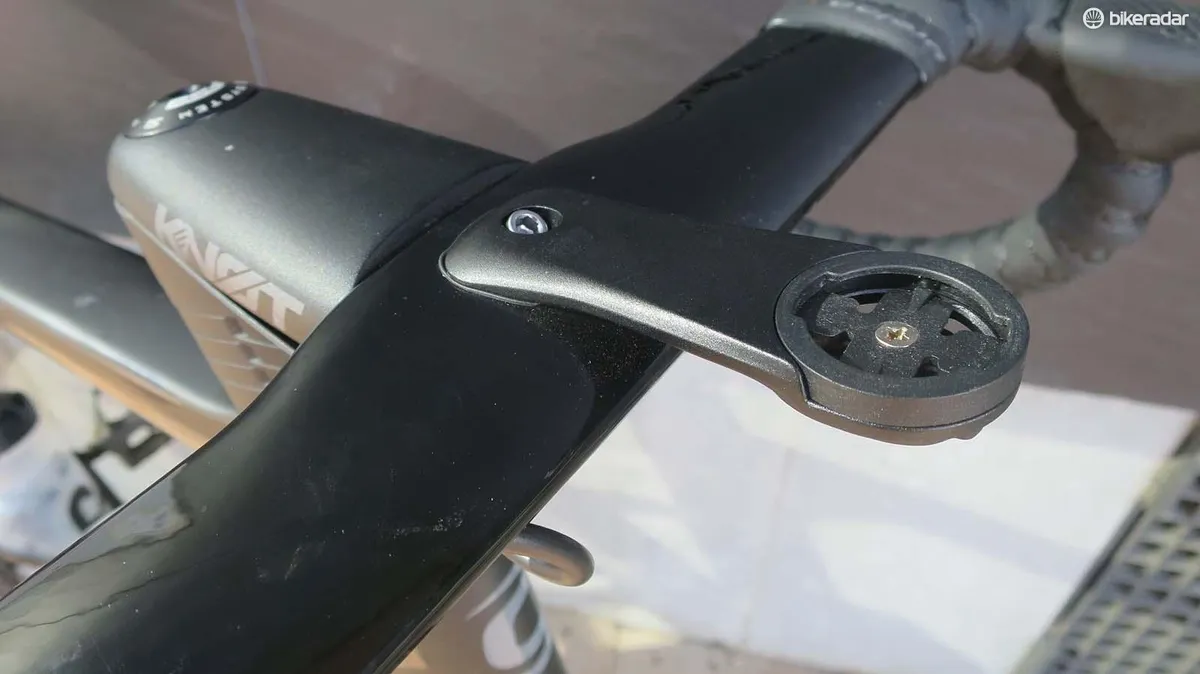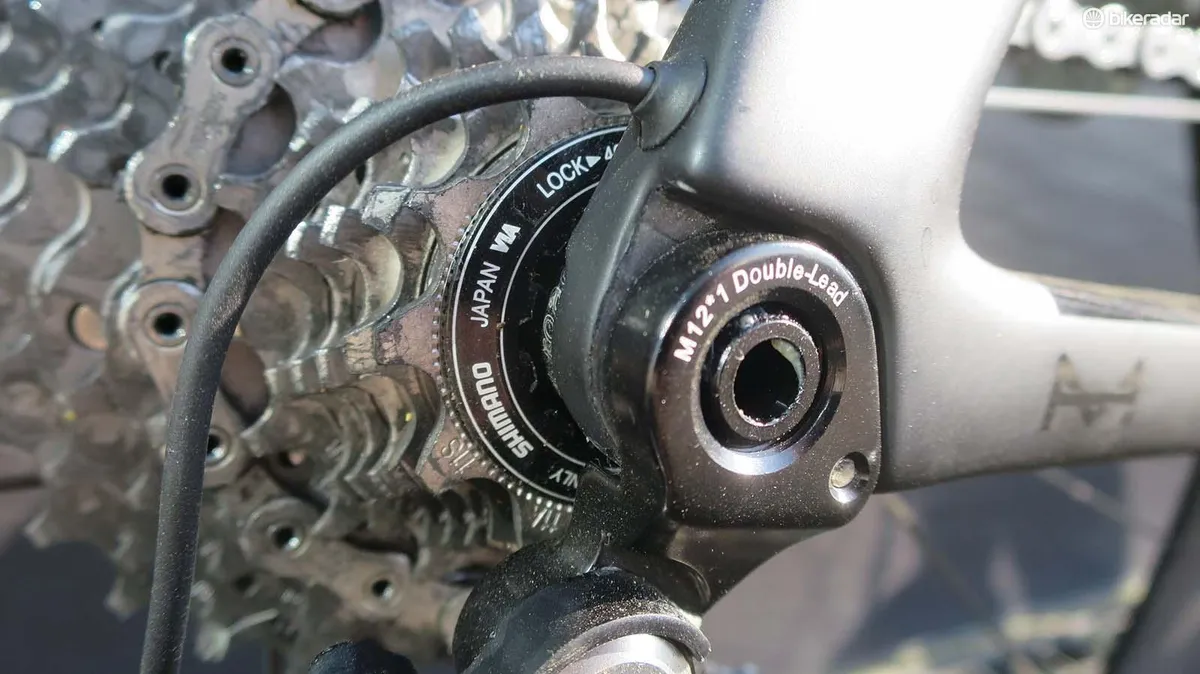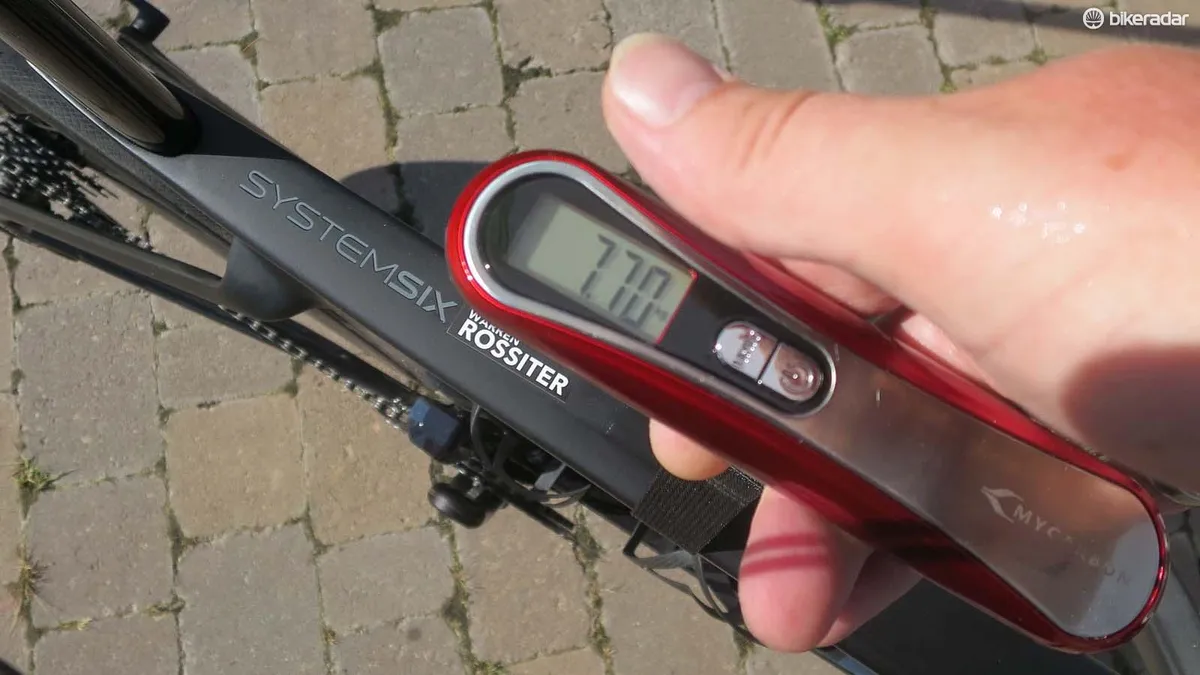The world’s fastest bike is a pretty bold claim, so when I first got on board I wasn't sure what to expect to find. Would it have the traits common to a lot of aero road bikes, such as resolute stiffness, straight line stability, a seriously aggressive ride position, middling handling and a firm ride? Well, I took it out for a spin to find out.
- Cannondale’s new SystemSix claims to be the fastest UCI approved road bike in the world*
- Best road bikes 2018: how to choose the right one for you
- Cannondale SuperSix Evo Dura-Ace review
Cannondale SystemSix Hi-Mod Dura-Ace Di2 spec overview
- Frame: Hi-Mod Ballistec carbon
- Fork: Hi-Mod Ballistec carbon
- Wheels: Cannondale Hollowgram KNOT64, tubeless-ready 64mm deep carbon rims on custom front and rear hub with DT Swiss 240 internals
- Crankset: Cannondale SiSL2 with Power2Max NG Eco power meter and Vision rings (52/36)
- Gears: Shimano Dura-Ace Di2, 52/36, 11-28
- Brakes: Shimano Dura-Ace hydraulic disc
- Finishing kit: Vittoria Rubino Pro slick G+ 23c tyres, Cannondale KNOT system carbon bar and 2D forged alloy stem, SystemSix seatpost, ProLogo Dimension saddle
- Weight: 7.7kg (58cm) inc. two bottle cages and Garmin mount
Cannondale SystemSix Hi-Mod Dura-Ace Di2 geometry
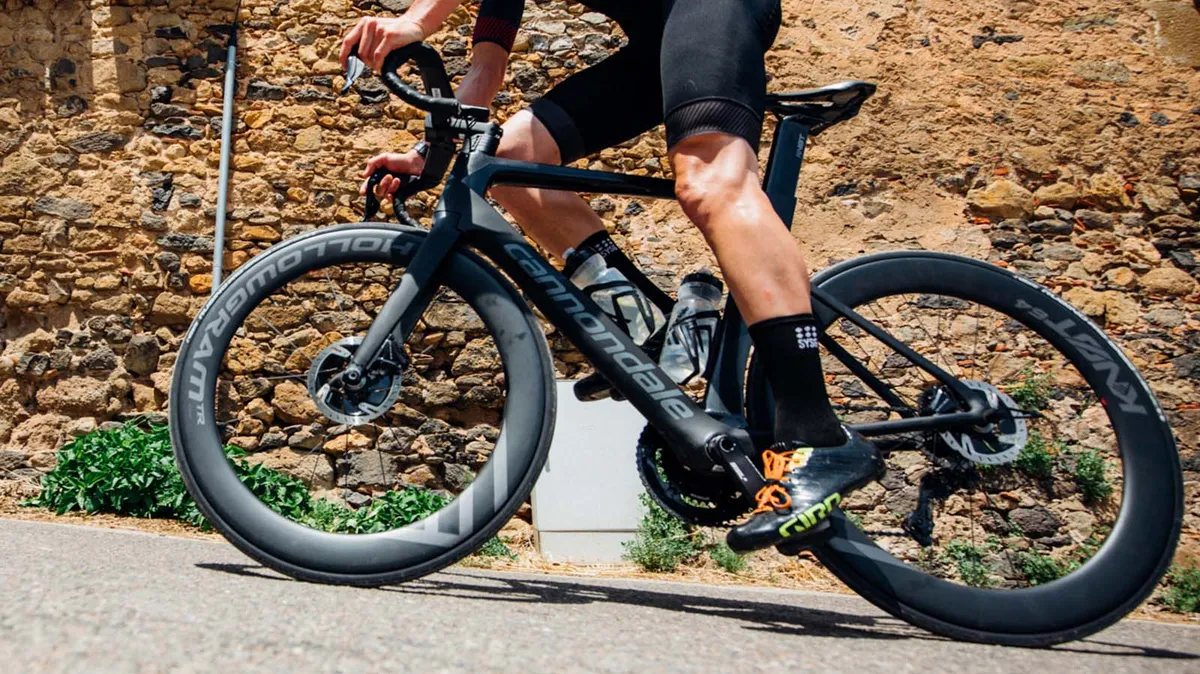
Quite quickly, after the first few kilometres of a rolling test loop out of the cycling Mecca that is Girona (and in oppressively high 35-degree plus heat), my overriding feeling was one of familiarity. The SystemSix feels just like the Evo, which in my experience and for my personal tastes is one of the finest fast handling road bikes ever made.
When you look at the numbers you see that the SystemSix has a reach that’s just 0.1mm shy of the Evo and a stack just 4mm taller, both pretty indiscernible from each other.
It shares the same short 1-metre wheelbase thanks to the use of short (for a disc bike) 405mm chainstays, a 73-degree head angle and a 73.5-degree seat, close to the Evo’s parallel 73.3 numbers, and the trail on the fork is within 1mm too.
Cannondale SystemSix Hi-Mod Dura-Ace Di2 ride impressions
Where the SystemSix also scores is in ride quality. When I saw that it was running deep 64mm carbon rims and ‘only’ 23c tyres, I expected a bit of chatter when rolling over coarser surfaces, but the tyres are spread to 26mm wide — with the current crop of ever-wider carbon rims, especially on disc bikes, the nominal ‘c’ sizing on tyres is really becoming moot. When was the last time you found a tyre's width actually reflected the claimed size after fitting?
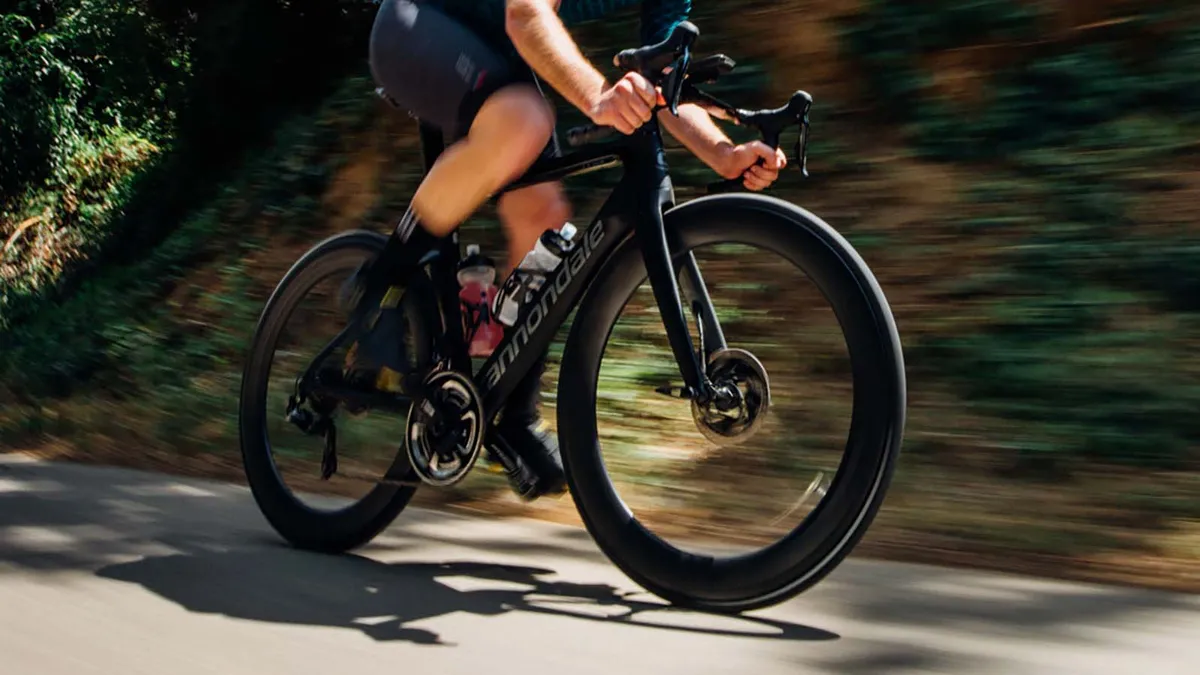
The tyres roll smooth, with plenty of supple feel. They may not be Vittoria’s premium Corsa, but these new Rubino Pro Speed tubeless tyres are graphene infused, like their premium brothers, and they do roll well, and I’d only expect that to improve if you ran them tubeless, which is how they’re intended.
I’d still like more brands to take Giant’s cue that if a bike comes tubeless then sell it that way, rather than leave it to the buyer to convert.
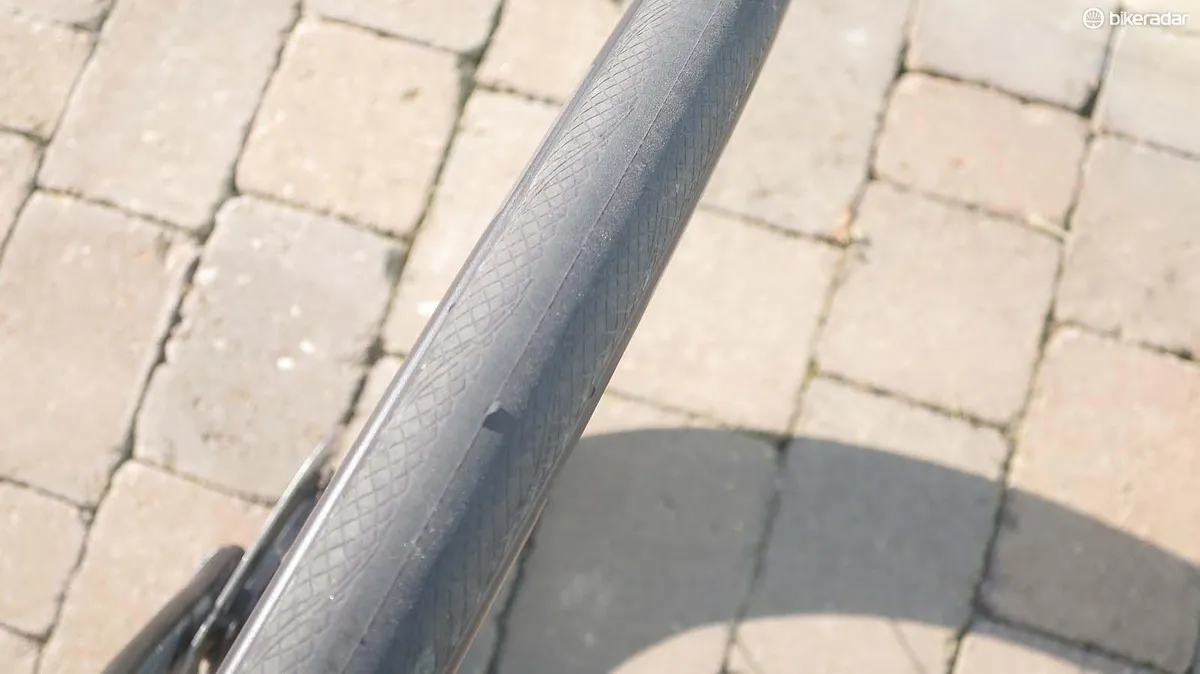
On the tyre and rim interface, I’d have to say it’s a little disconcerting to see the carbon rim sit proud of the tyre when looking down at the front wheel spinning along, but any concerns about grounding the rim through a pothole or over a speed bump (there are surprisingly common around Girona, even on steep descents) were unfounded and the wheel/tyre combo is impressively stable for something this deep.
So is it fast, as claimed?
Judging aero claims is really a black-art without a state of the art tunnel and a few experts to let loose on the data. Plus, riding on unfamiliar roads and conditions is another barrier to making a judgement.
But looking at my Garmin data, in regards to power and heart rate versus average speed for the distance (90km), the average speed was around the same as what I get in the UK.
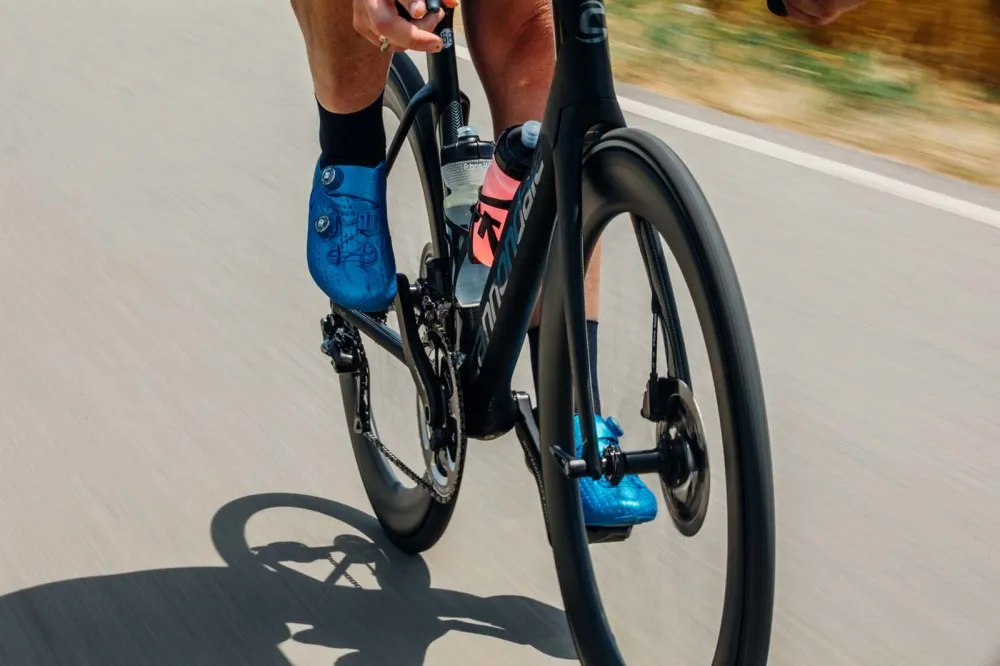
My heart rate average and time in zones was pretty consistent, but both my normalised power and average power were lower by around 15w for normalised over the course of the ride, though the peak power was around the same.
I’m not sure I can put this down to the bike rather than differences in the meter measure — I use Quarq and Shimano power meters on my own bikes.
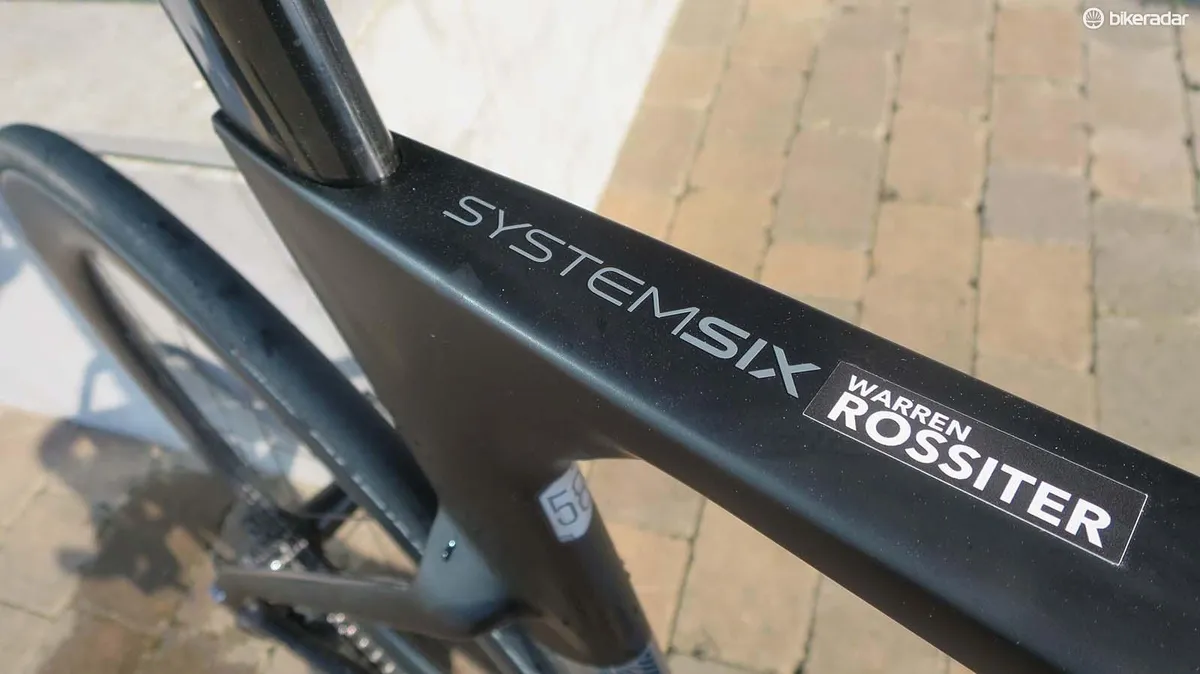
Anecdotally, however, I would say that the SystemSix’s ability to maintain speed was truly impressive. Drop the Cannondale into a descent and it gathers speed with resolute ease, and the riding around Girona is pretty rolling.
It’s here where the SystemSix really starts to make sense and you can gather huge momentum on the downs that’s enough to carry into the next rise, saving a huge amount of effort and enabling you to maintain so much more speed.
The handling is very much like the Evo, with that almost telepathic ability to change direction. The overall nimble feel is there, yes, its slightly dulled by the deep 64mm rim on the front, especially when the wind picks up, but I’d like to try experimenting with a slightly shallower front, such as Enve and its wheelsets or how Giant has specced the latest Propels.
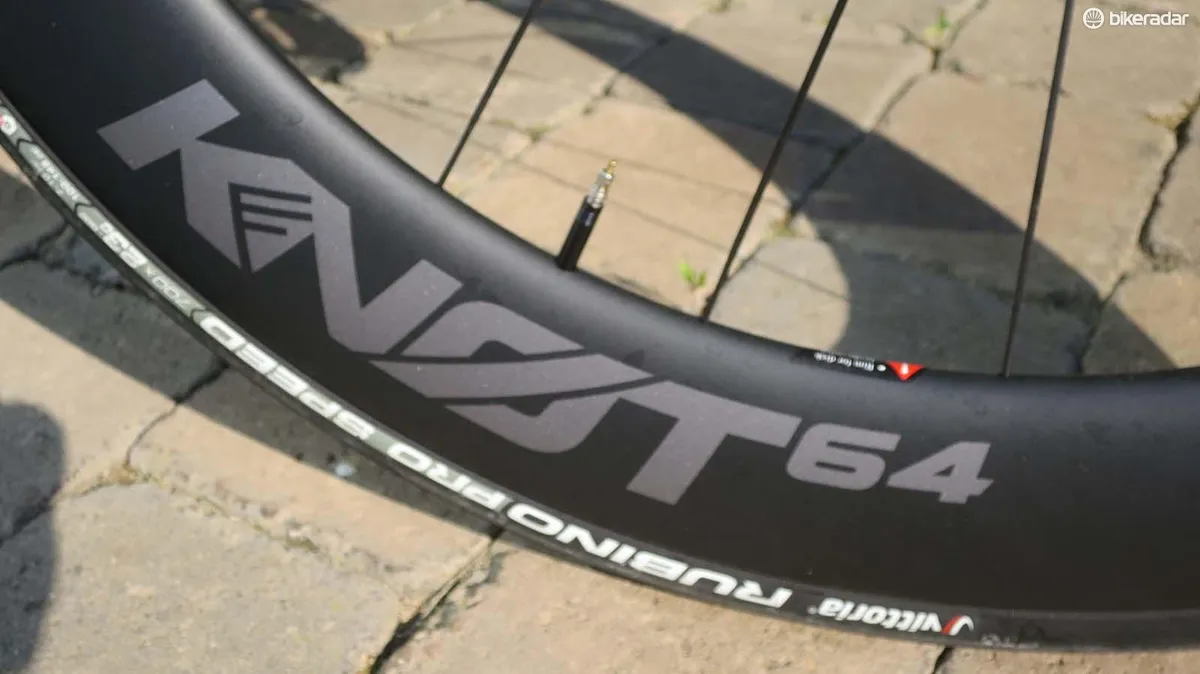
Though manoeuvring at slow speed or track standing does hold a surprise, the fork has a bump stop built in to stop it over-rotating and to allow the internal brake hoses to run through the frame smoother with no chance of getting crimped or crushed.
Positioning the bump stops on the fork does stop you damaging the frame in a crash (the bump stops are sacrificial) because they lock the steering out at around a 50-degree angle, which I did manage to bump up against when track standing at traffic lights.
As you’d expect, the Shimano Dura-Ace Di2 group performed just as well as it always does, with slick accurate shifts and smooth braking with plenty of feel. I did get the occasional bit of the tell-tale swish noises from rotor rub after strong, prolonged braking efforts, but I can forgive that because the bike was box-fresh and the weather seriously hot.
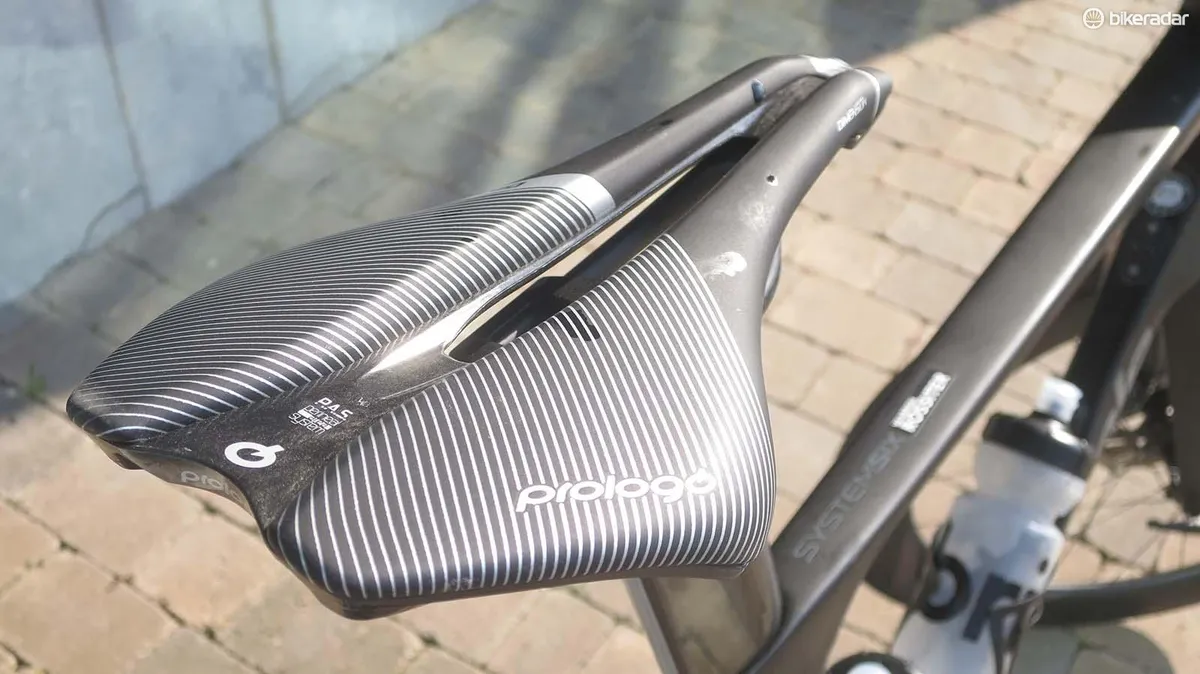
The new KNOT bar is well shaped with a nicely ergonomic compact drop and the flat top section shallow enough to hold comfortably, but wide enough to safely rest your forearms on if you want to get into a bit of an aero tuck on long flat sections.
The combination of Prologo silicone tape and its excellent Dimension shorty saddle mean the contact points are spot on too.
Cannondale SystemSix early verdict
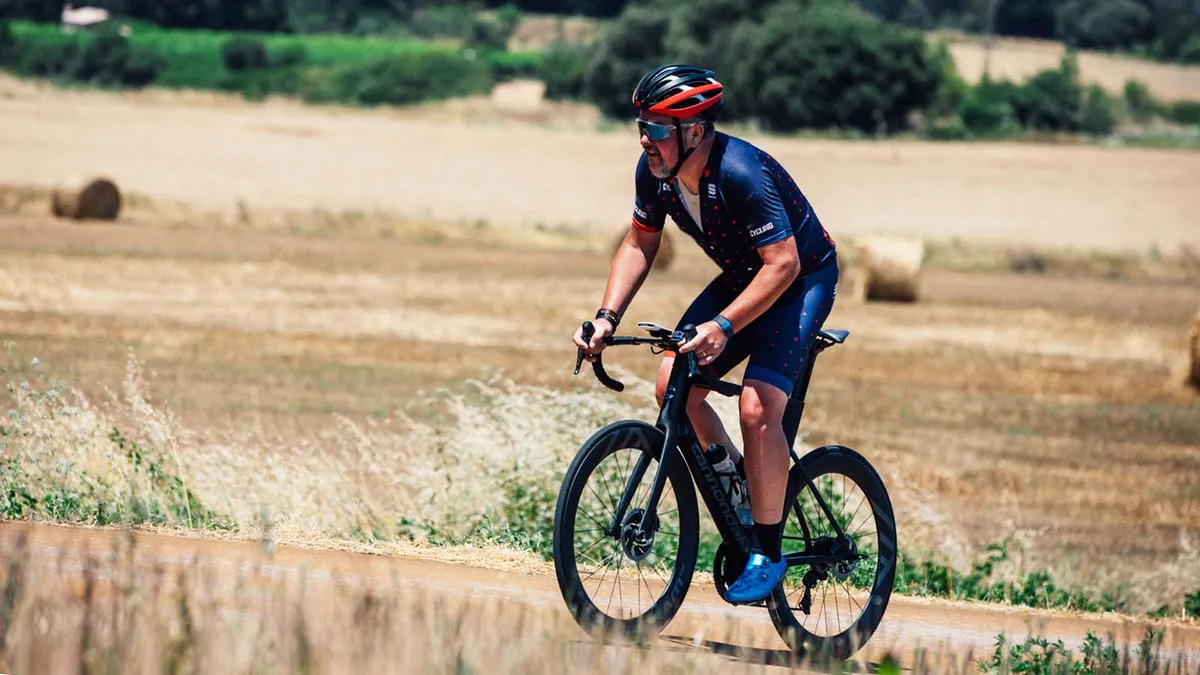
I can’t really score a bike on just a couple of rides on unfamiliar roads, but my first impressions are pretty much all positive.
I love the way the SystemSix handles. Cannondale has combined pro-race bike agility with aerodynamic efficiency in a way that I’ve always wanted from an aero-road bike.
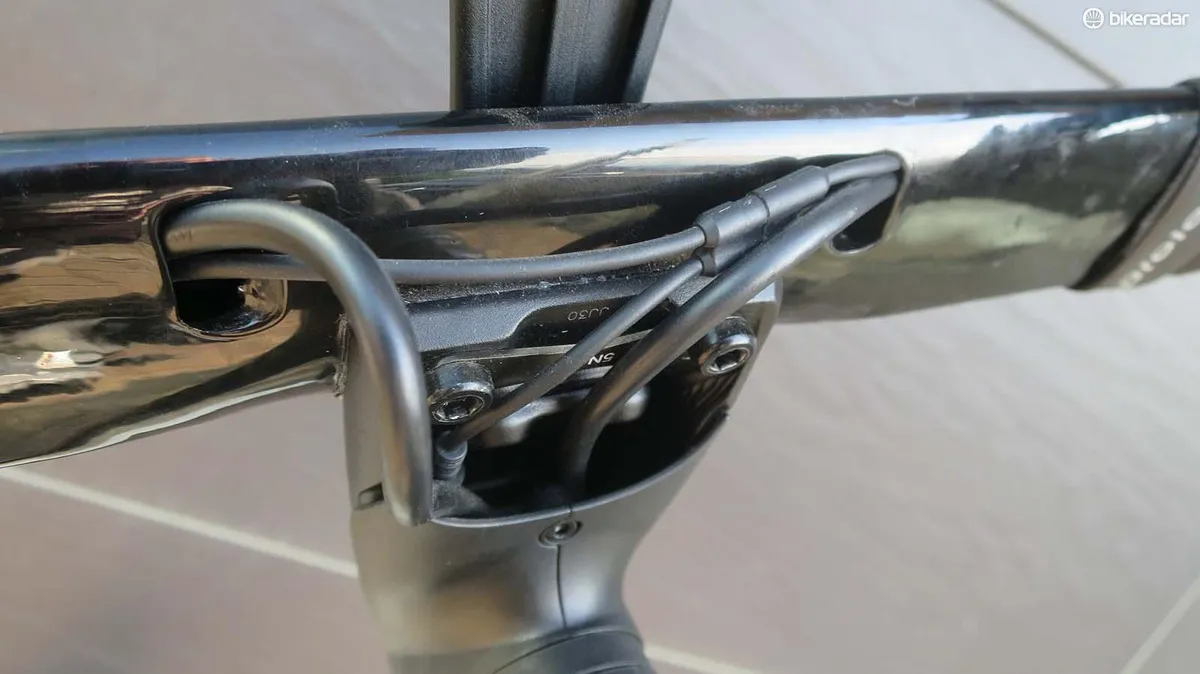
The overall 7.7kg weight (including two bottle cages and an out-front Garmin mount) is impressively light for an aero road bike, especially one running 64mm deep aero wheels, and you’ll shed a few grams more if running it tubeless, as intended.
The downsides? Not much to be honest. Yes, when I was deep into the red on a double-digit ascent at the end of the ride (ending up paperboying to and fro to get up the last steep slope) I did wish for a superlight Evo with its over a kilo less mass. Everywhere else though I couldn’t fault it.
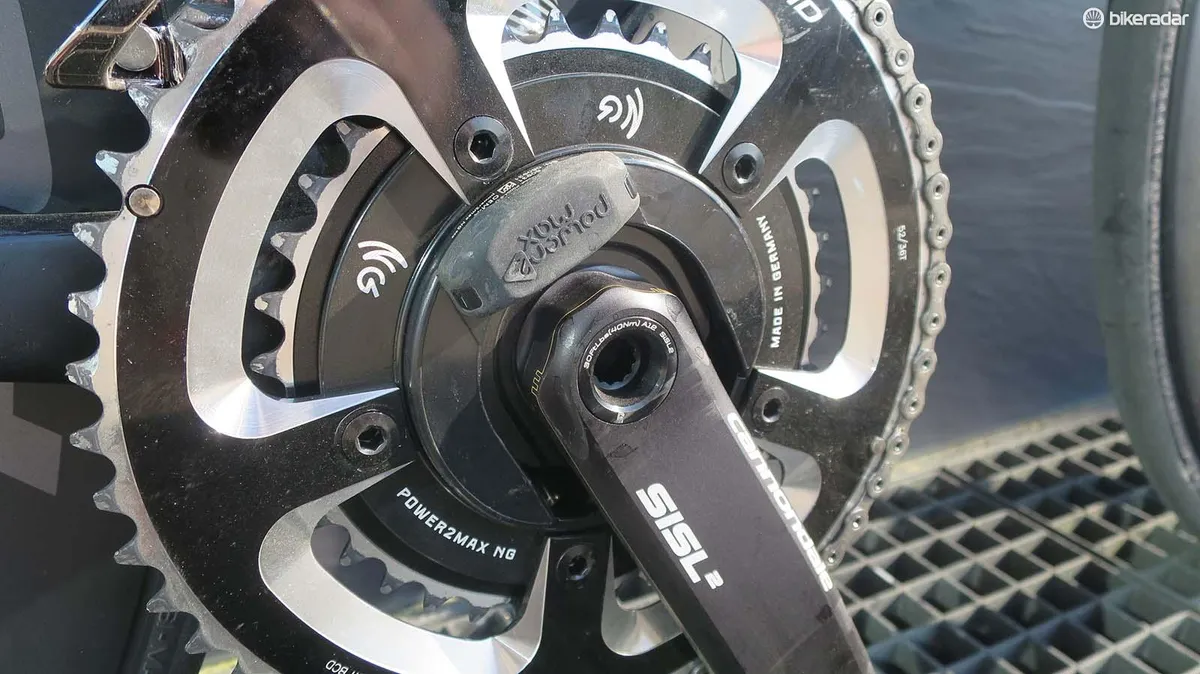
I would like to have the bike setup tubeless because sticking a tube into a tubeless setup seems like a compromise and it’ll give you more opportunity to experiment with tyre pressures, not to mention improve the way the tyres roll.
The SystemSix does however continue Cannondale’s uncanny knack for combining understated clean design with some seriously clever tech, and the SystemSix deserves its place alongside the sublime Evo and super smooth Synapse, completing a formidable road arsenal.

